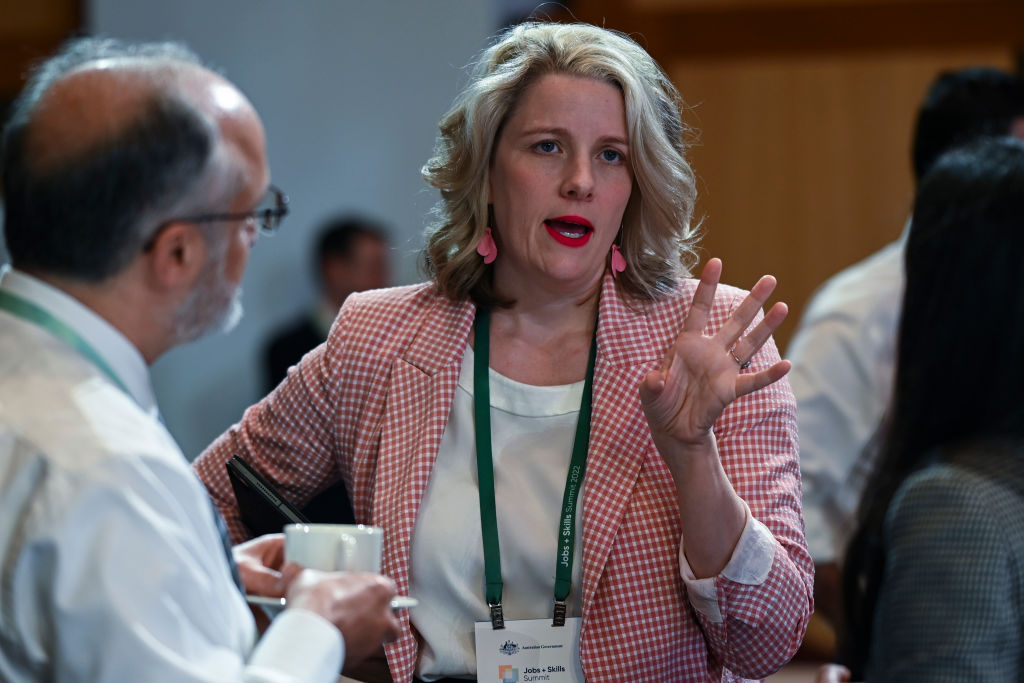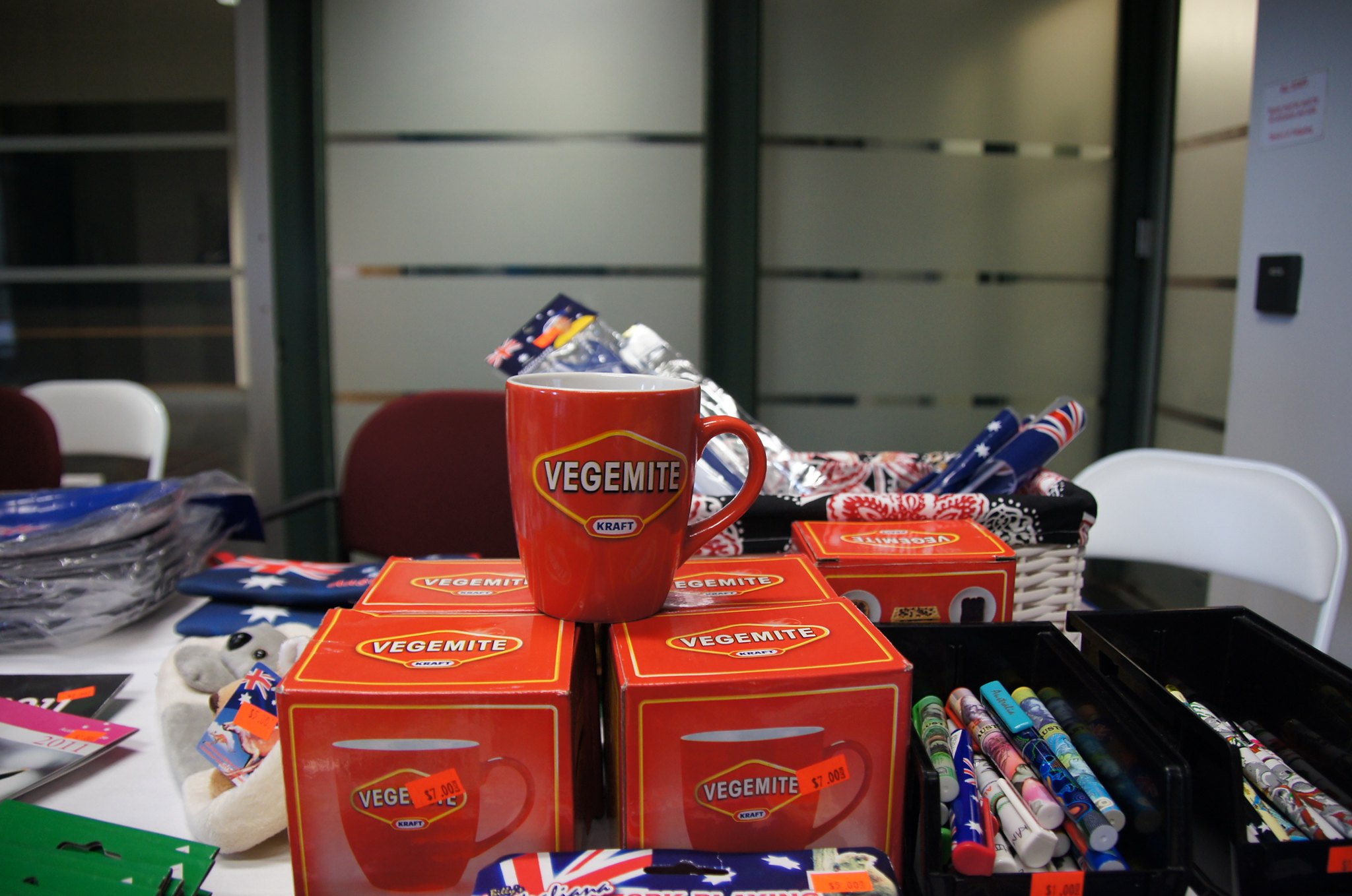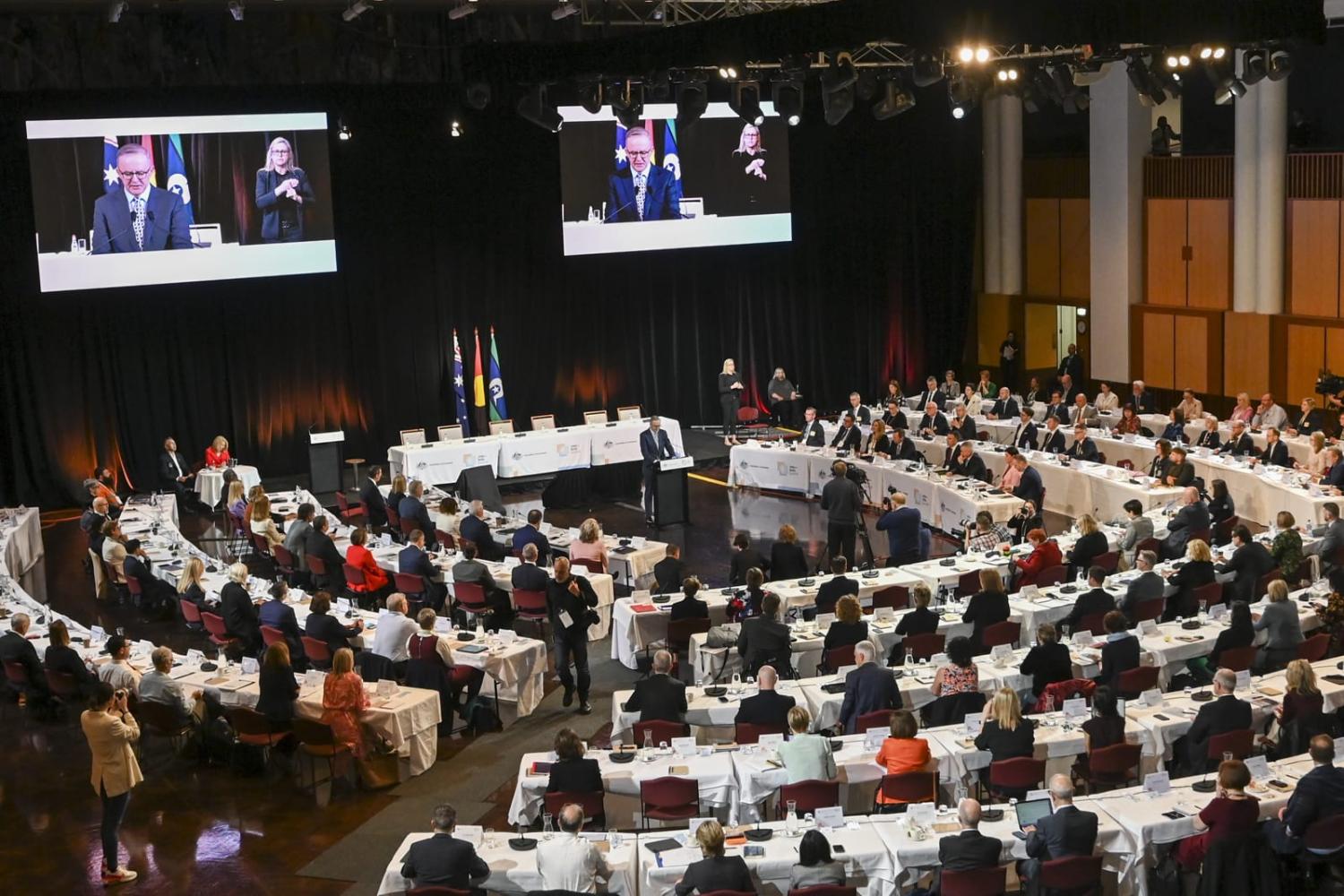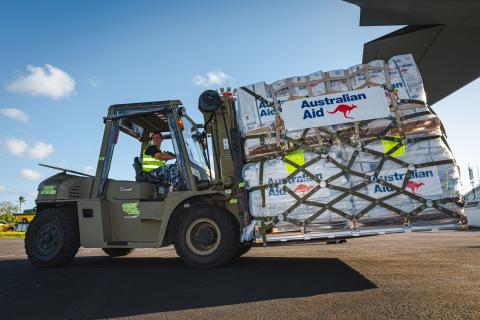Broader security
Australia’s ministers for home affairs and their immigration or border protection predecessors in recent years have tended to be associated with rhetoric about nation building behind the secure borders of an erstwhile Lucky Country.
This meant asylum seekers were locked away in offshore processing centres in places such as Nauru and Papua New Guinea, while Australian businesses turned to endless and ever-changing short-term labour visas to fill gaps in the workforce.
In reality, the last Rudd/Gillard Labor government eventually embraced the tough offshore processing of refugees put in place by the centre-right Howard government. But that government and its recent conservative successor remain most associated with Howard’s evocative 2001 line: “We will decide who comes to this country and the circumstances in which they come.”
Last week the new Albanese Labor government held its first major policymaking event, a jobs and skills summit which brought together 140 selected participants to discuss workforce participation and skills amid the global inflation crunch and in the wake of closed borders.
It was principally driven by domestic economic policy imperatives ahead of the new government’s first budget. Among changes announced, this year’s migration program has been expanded by 35,000 places to 195,000 and foreign students have been given longer post-study work rights. But it was also an attempt by the government to wrap itself in the consensus aura of the 1980s Hawke/Keating Labor government which overhauled Australia’s approach to international diplomacy and economics.
Nevertheless, the event did raise some interesting issues about how the new government might change Australia’s face to the world. This was perhaps best captured by Home Affairs Minister Clare O’Neil’s blunt warning that Australia’s immigration policy was in “continental drift” and that for the first time in the country’s history it “was not the destination of choice for many of the world’s skilled migrants.”

O’Neil is emerging as a minister to watch in this government, placing the doleful security work of a home affairs minister in a bigger context. For example, she declared in a radio interview:
If we are going to bring people into our country through the migration system, we need a social licence from Australians to do it, and we’re only going to get that if we address this difficult issue with housing.
The idea of really linking more immigration with fixing inadequate public housing and expensive private housing in the Melbourne suburbs O’Neil represents in parliament has intriguing echoes of the Biden administration’s challenge delivering its promised foreign policy for the middle class.
Migrant nation
Australia has been changed for good every couple of generations by new waves of migrants but there is now an emerging consensus the system is broken with a confusing array of about 70 short term visa classes. This results in long processing times, abuse of workers tied to one approved job, inadequate focus on flexible domestic training and the re-emergence of foreign students misusing the visa system to work rather than study.
But despite these problems O’Neil wants to double down on immigration as the partial solution to an even bigger list of challenges, from sovereign manufacturing capacity in an uncertain security environment to aged care in an ageing society. And in a striking break with the rhetoric of the recent past, she says:
That switch is moving away from a system focused almost entirely on keeping people out, to one that recognises that we are in a global competition for talent … We need to think about how we can survive as a country if supply chains get shut again … this is something we weren’t thinking about 30 years ago.
A Big Australia for national defence purposes is not a new idea. But in pursuit of a much bigger strategic objective, the new government is taking on the old nativist opponents of migration at the same time as the new business thirst for quick short-term workers.
This new sovereign thinking in immigration has won valuable support from Australia’s biggest tech start-up, Atlassian, which has a pressing need for more skilled workers wherever it can find them. However, co-founder Scott Farquhar concedes: “There is a geopolitical overlay that wasn’t always there. We need to make sure whether in five years time that it is a (source) country we are going to be friendly with.
To brain drain or gain
Remarkably about 20 per cent of nurses in Australia’s sophisticated health system were trained overseas and about twice that proportion were born overseas.
So, it was quite striking that just as nurses’ union leader Annie Butler told the summit that Australia should no longer fix its hospital staff shortages by taking nurses from poorer countries, the new Philippines President Ferdinand Marcos was trying to manage the supply side of the international labour market.
Addressing the brain drain of Filipino nurses to better paid overseas jobs he promised to both let more work overseas and also make it more attractive to work at home. The reality is about a third of the Philippines’ 900,000 registered nurses already work abroad when they are desperately needed at home.
“They are so good everybody wants them, and they are willing to pay for it, and we are not, or we’re not able. So, we have to come up with some strategies for that,” Marcos said in a lament shared by many of his regional peers.
One of the obvious challenges from O’Neil’s promised new immigration switch from short term to permanent foreign workers will be what it means for the most recent development in Australia migration – the growing influx of Pacific islands workers. The Pacific labour schemes are an aid success story because they are notionally a non-cash form of assistance, they send remittance money back home, eventually send better skilled workers back as well, and they have support from more nativist Australians, particularly in farming areas.
The Albanese government has shifted the emphasis with a ballot for 3000 Pacific permanent work visas a year which is an implicit acceptance Australia may need to take more permanent migrants from some regional countries due to climate change.
While this program is good for the individuals involved, a switch to more permanent migration is likely to intensify the concerns in countries such as Samoa, Vanuatu, and Fiji about a brain drain. It is even worse when some skilled Pacific workers wind up doing unskilled work in Australia just for the higher pay.
This should be manageable but the image of rich Australia improving its own social cohesion with more permanent migrants at the cost of deskilling already economically stressed neighbours will need to be avoided.
Leagues of nations
The warning Australia is no longer ranked as the country of choice for skilled migrants highlighted an interesting sub-current in the summit discussions – what is the right comparator group for an advanced Western economy at the bottom of Asia on these socio-economic issues?
Standing out in the British Commonwealth has long been redundant. In the 1970s and 1980s many Australian economic reformers drew their comparative inspiration from the emerging neo-liberalism which prevailed in the United States and Britain. The Hawke era emphasis on consensus elevated the northern European social democratic economies as role models.

But Australia is now really part of Asia in terms of trade, people flows, security, and some (mostly inward) investment, so Asian comparisons may be more relevant in trying to design a more competitive economy. See Leigh Howard on Asian links here.
And indeed, Singapore gave substance to O’Neill’s skilled worker warning in the run up to the event by announcing a new visa which allows high skilled foreigners to live there for five years and freely change jobs. Singapore’s Manpower Minister Tan See Leng could have done a summit pep talk with his declaration: “As a country with little or no natural resources, talent is our only resource and talent acquisition is an offensive strategy for us.” Even Thailand has just joined the competition for these footloose skilled workers with a new 10 year visa.
The summit’s most cited presentation by the Grattan Institute’s Danielle Wood tends to use selective Organisation for Economic Cooperation and Development comparisons where newly disrupted small nimble economies from Ireland to Estonia stand out.
But the favoured comparator group when it came to participant referencing seemed to be the Harvard Growth Lab’s Atlas of Economic Complexity, where Australia awkwardly lags at 91 out of 133 countries after declining for two decades during the mining export boom. The mining industry argues this measure is simplistic by undervaluing its role in developing and exporting complex engineering services (known as METS).
Fixing the hollowing out effect on jobs rich manufacturing from the commodities boom was a recurring theme of the summit with a need for both imported skilled workers and better educated local ones. But while coal mining might be dying, it was striking just days after the summit to see consensus-seeking Prime Minister Anthony Albanese still talking up mining as having a “proud record as a creator of good, secure, well-paid jobs for working people.”


